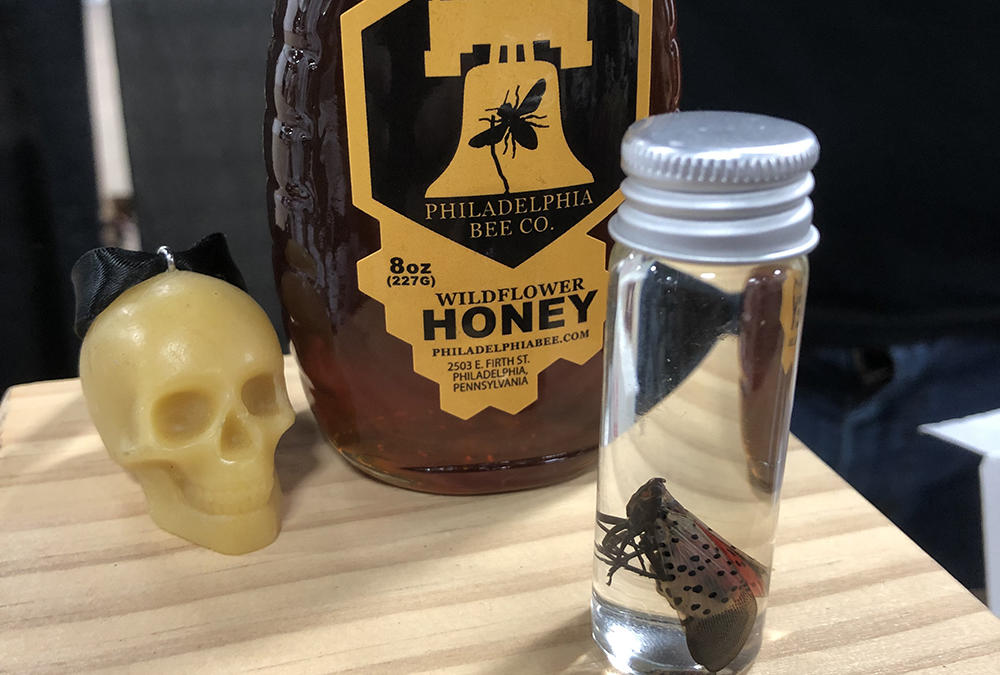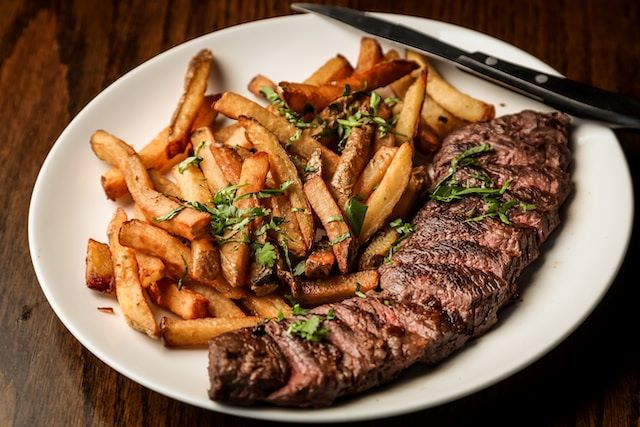On any given Saturday, Jethro Heiko holds court in a tiny plywood shed.
A Willy Wonka-esque contraption churns at its center, billowing caramel-scented steam.
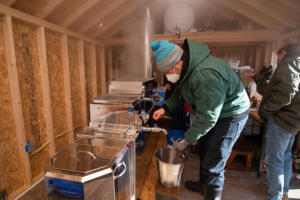
More than 400 gallons of maple sap a week are simmered here, as volunteers from across Philly haul in bucket after bucket of the sweet water drawn from nearby tree trunks. Soon, most of this brew will vanish, leaving just 10 gallons of thick, nut-brown syrup.
“We’re like really large bees,” says Heiko, founder of Oak Lane Maple, the only community-based syrup program this far south of Vermont. “A volunteer workforce collecting a very diluted honey and processing it in our hive.”
When it comes to sweeteners, the world knows two kinds: connectors and con artists.
Sugar stands among the tricksters. It’s seductive and entertaining in small doses, but before you know it, it traps you in a toxic relationship.
Sugar also comes with bitter baggage. Wars have been fought over it. People have been trafficked for it. Land and labor today are still being exploited to produce it.
Maple syrup and honey, meanwhile, are generous networkers. They‘re delicious reminders that we depend on one another, and that our trees, rivers and animal neighbors work together to nourish us.
“Maple trees are basically large factories,” Heiko describes, “powered by leaves that act as small, self-replicating solar panels.”
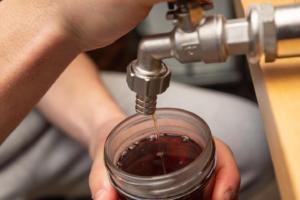
Oak Lane Maple sprouted from a backyard hobby Heiko nursed during the pandemic. As his family moved from Fishtown to leafy East Oak Lane in 2018, he grew curious about the giant maple trees dotting the neighborhood.
As Heiko would discover, the towering maples of Philly’s “urban sugarbush” — the term for centuries-old tree clusters found in cemeteries, parks and backyards throughout the city — yield sap that’s often two to three times sweeter than what you would find in the forests of Vermont.
The only downside? Once extracted, sap spoils fast.
“We want more people to see trees as food sources.”
Identifying trees, managing taps, and securing the places, people and equipment needed to move and boil sap demands major collective effort.
Luckily for Heiko, organizing comes naturally.
“Community organizing skills come in handy when you need to have awkward conversations. I’d knock on folks’ doors and say, ‘Did you know you have a sugar maple? Would you like to be part of our program?’”
Heiko has stirred up “good trouble” in Philly and his native Boston for decades. Before Oak Lane Maple, he founded Casino Free Philly, a movement challenging the development of gaming in favor of public space on the Delaware River waterfront. He draws inspiration from his mother, a teacher who protested racist practices in the Boston school system.
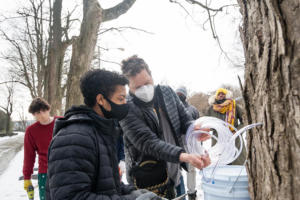
Heiko’s roots helped Oak Lane Maple flower into a viable syrup share program. Now it’s supported by an equipment grant from the USDA and partnerships with Stockton University and Wyncote Academy. Property owners who offer their trees for tapping, and residents who volunteer their time, get to take home a pint of maple syrup every week.
For now, much of Heiko’s operation is limited to the trees within a mile or two of the Elkins Park sugar shack. But with enough community interest, he sees the program expanding to other tree-rich areas of the city: Fairmount Park, Wissahickon, Germantown, Mt. Airy and more.
“We want more people to see trees as food sources,” Heiko emphasized. “Once people are connected to these trees, they’ll want to protect them.” The key to doing that, he says? “Let’s create a tree homeowner insurance program, educate landlords, connect more folks with edible green spaces and [the Pennsylvania Horticultural Society’s] Tree Tender groups.”
Tell it to the bees
For Don Shump, founder of Philadelphia Bee Company, making honey means spreading joy.
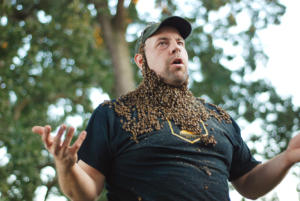
“The main draw for me to beekeeping was about the stories you could tell. When you tell people at a party that you design websites, they go oh, OK. But when you say you keep millions of bees within city limits, eyes light up.”
Shump never expected he would become Philly’s bee king. He spent most of the early aughts coding homepages, counting hours until his true calling revealed itself.
“I was living a life of quiet desperation,” Shump says of his rat-race existence at the time. “I would take up any weekend hobbies I could to keep myself entertained.”
Destiny arrived on the deck of a cod fishing boat. Shump volunteered on the Gazela, a historic tall ship docked at Penn’s Landing. When he mentioned he had seen a video of a guy keeping bees in Manhattan, “a crewmember who belonged to the Southwark Queen Village Community Garden said that bees had been kept there since the ’70s. I had to check it out.”
Within a year of learning the secret language of bees at Southwark, Shump fell under their spell.
He purchased two hives of his own in 2008. Soon after, two hives became 10. 10 multiplied into 20, and today, the Philadelphia Bee Company is one of the largest urban beekeeping operations on the East Coast.
Most of this buzz, Shump reassures the phobic among us, happens out of earshot.
“I have a quarter million bees on the roof of a candy store next to the busiest ice cream shop in Philly. No one would ever know unless they see me walking by with my smoker and veil.”
More than 3 million company bees sip flowers from Pennypack to Point Breeze, each traveling no more than a mile from its hive. The result? A kaleidoscope of honey that changes taste from zip code to zip code.
Bees have their favorite haunts — clover buds, bee balm and virtually anything in the mint family — but in a pinch, they make do. Famously, Shump discovered that his hives took honeydew from the invasive spotted lanternfly, the kiss of death for many trees, and transformed it into a rich, savory honey. “I walked into our honey house one day and thought, who’s eating maple bacon?”
Resilient as they are, nature’s hardest workers face serious threats: pesticides, diseases and the effects of climate change, to name a few.
And stressed out bees spell danger for us: bees and other pollinators are responsible for an estimated 70% of the fruits, vegetable and grain products we buy at the grocery store.
Locally, the biggest threat comes from us.
“Modern lawns and yards are like deserts to bees,” Shump warns. Our obsession with manicured, tree-less turf and ornamental plants, he explains, deprives bees of critical nutrition, and us of natural shade and flood protection.
The best remedy? More trees. “Native, flowering trees rich in nectar, especially lindens and black locusts, which are on Philly’s approved street tree list, give bees the most bang for our buck. And the only space needed for them to grow is up.”
A spoonful of wisdom
Growing up outside of Wilkes-Barre, Ben Poole of Bee Creek Farm worked in the family business, helping golf courses cut back on their use of harsh chemicals.
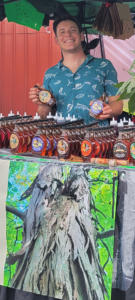
“It was there I learned about the devastating impact that pesticides have on bees when they accumulate in the landscape,” Poole shared. “I was determined to create a renewable resource that doesn’t require the destruction of nature.”
But on a cold February morning at the Philadelphia Home and Garden Show, it wasn’t his honey that attracted attention.
He doled out spoonfuls of a syrup few had ever heard of. Its flavor could be best described as that of a campfire-charred marshmallow. The naturally smoked, spicy sweetness reminded one of birch beer.
“It’s shagbark hickory syrup,” Poole explained. “Perfect for glazing salmon.”
The shagbark hickory is a slow growing hardwood that only lives in the Northeast and the Midwest. It gets its name from the long, curling strips of bark that it sheds throughout the year. Indigenous Susquehannock peoples made tea from the bark for thousands of years.
Poole thinks a lot about the wisdom our surroundings hold for our mental health. With the pandemic, climate change, endless war and oppression, it’s easy to feel alone and afraid, even in an uber-networked world. Perhaps a spoonful of syrup and a walk in the park are just what the doctor ordered. “Reconnecting with nature may help us appreciate how interconnected we really are.”
To learn more, purchase and volunteer:
- Philadelphia Bee Company: www.PhiladelphiaBee.com
- Oak Lane Maple: www.OakLanemaple.com
- Bee Creek Farm: www.Bee-Creek.com
